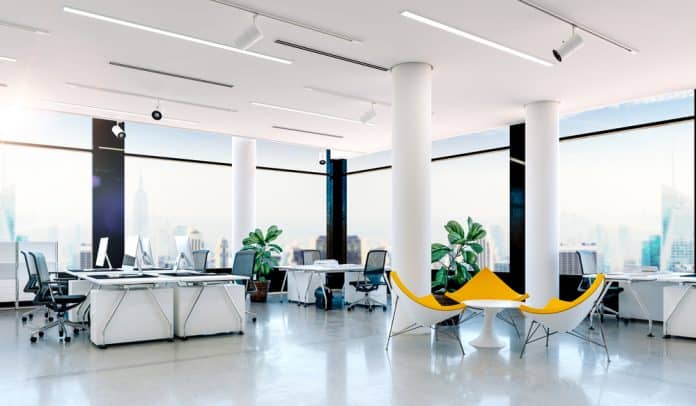
Malls in Metro Manila will experience a major overhaul in the new normal. According to a report from Business World, retail spaces will likely be repurposed into warehouses, co-working spaces, or data centers to stop the losses from rising vacancy rates, according to a report from Business World.
Colliers International Philippines projects that vacancies will hit 13 percent this year.
The strict community quarantine measures last year drove retail spaces to shut down for almost two months. Although the protocols have eased up in May, foot traffic still hasn’t returned to pre-pandemic levels.
Colliers offers more insights to the state of the retail sector in the upcoming Lamudi roundtable discussion on February 11.
Mall’s Changing Face
For the retail sector to bounce back, malls will likely undergo “aggressive” transformation, seizing the demand in other industries and serving as coworking spaces and in-mall fulfillment centers or microwarehouses, according to Joey Bondoc, senior research manager at Colliers.
Back in December, Colliers already forecasted that warehousing will enjoy a “healthy” demand this year, as reported by CNN Philippines. The real estate consultancy firm said that the industry already represents 70 percent of the country’s economic output.
A few retail industry players have already bared plans to convert their spaces into microwarehouses, specifically accommodating the demands of their tenants moving online.
In another report from the Philippine News Agency (PNA), consultancy firm Santos Knight Frank said that Tutuban Mall in Manila and SM North Edsa in Quezon City are among the physical malls that will be repurposing their spaces into storage facilities.
The boom in e-commerce, coupled with the growing demand for cold storage spaces, will push the logistics industry forward. Property consultancy firm JLL projects expansion to 3.5 million square meters of gross leasable area by 2030, a surge from 1.5 million sqm in 2020, Business World reported.
Alternatively, malls will likely be data centers, government offices, and healthcare-related facilities, according to Cushman & Wakefield, as cited in the first mentioned Business World report.
They said that having alternative uses for vacant retail spaces can help cut the revenue losses.
Efficient Transportation
The ongoing and completed infrastructure projects around the metro will support logistics infrastructure that new and converted industrial facilities need, facilitating efficient transportation of goods.
Recently, the government finished the construction of Skyway Stage 3, ABS–CBN reported. The new thoroughfare cuts travel time between the North Luzon Expressway (NLEX) and South Luzon Expressway (SLEX) from the usual three hours to 20 minutes. The skyway is expected to accommodate 200,000 vehicles daily once it’s fully operational.
Over in the north, the NLEX Harbor Link Segment 10 was opened last year in June, cutting travel time from Quezon City to the Port Area in Manila to 20 minutes from two hours. NLEX Corp. said that most of the vehicles using the thoroughfare are from the logistics industry, Philstar reported. It facilitates easier delivery of goods and services, while cutting operating costs of trucking companies.
Meanwhile, the Silang east section of the new Cavite-Laguna Expressway (CALAX) is targeted to open early this year, Business World reported back in July. It is the first section of the Cavite segment of CALAX. The Laguna segment started operations in August last year. Once the entire expressway is finished and operational, it will reduce travel time between CAVITEX (Cavite Expressway) and SLEX from the current 2.5 hours to 45 minutes.
Future of Mall Retail
Nonetheless, property experts are positive that some malls will retain their services. According to Colliers, retail spaces will likely be more open and spacious, as cited in the first mentioned Business World report. Food and beverage stores, as well as one-stop-shop health facilities within malls, are expected to increase in size to accommodate physical distancing requirements.
Smaller retail spaces inside communities and district malls will grow in number, as they accommodate the immediate needs of dwellers nearby.
According to consultancy firm Lobien Realty Group (LRG), mall retail has the potential of returning with groceries, home improvement, and house repair shops on the lead. Rental prices and the structure of rent payments will determine how fast tenants will set up shop again.
LRG added that the retail sector’s recovery likewise depends on the employment rate and OFW remittances trends, which influence the purchasing power of Filipino consumers.
#realestateblogph | #realestateblogphpropertynews | #REBPH | #realestate | #warehouses | #coworkingspaces | #MetroManila
Article and Photo originally posted by Lamudi last February 2, 2021.







More Stories
Vista Land Celebrates 50 Years with Sandiwa: An Event Honoring Leadership, Legacy, and the Filipino Dream of Homeownership
Vista Land Celebrates Love Month in Ilocos Region
Vista Land Bridges Cebuano Heritage and Progress with Valencia by Vista Estates